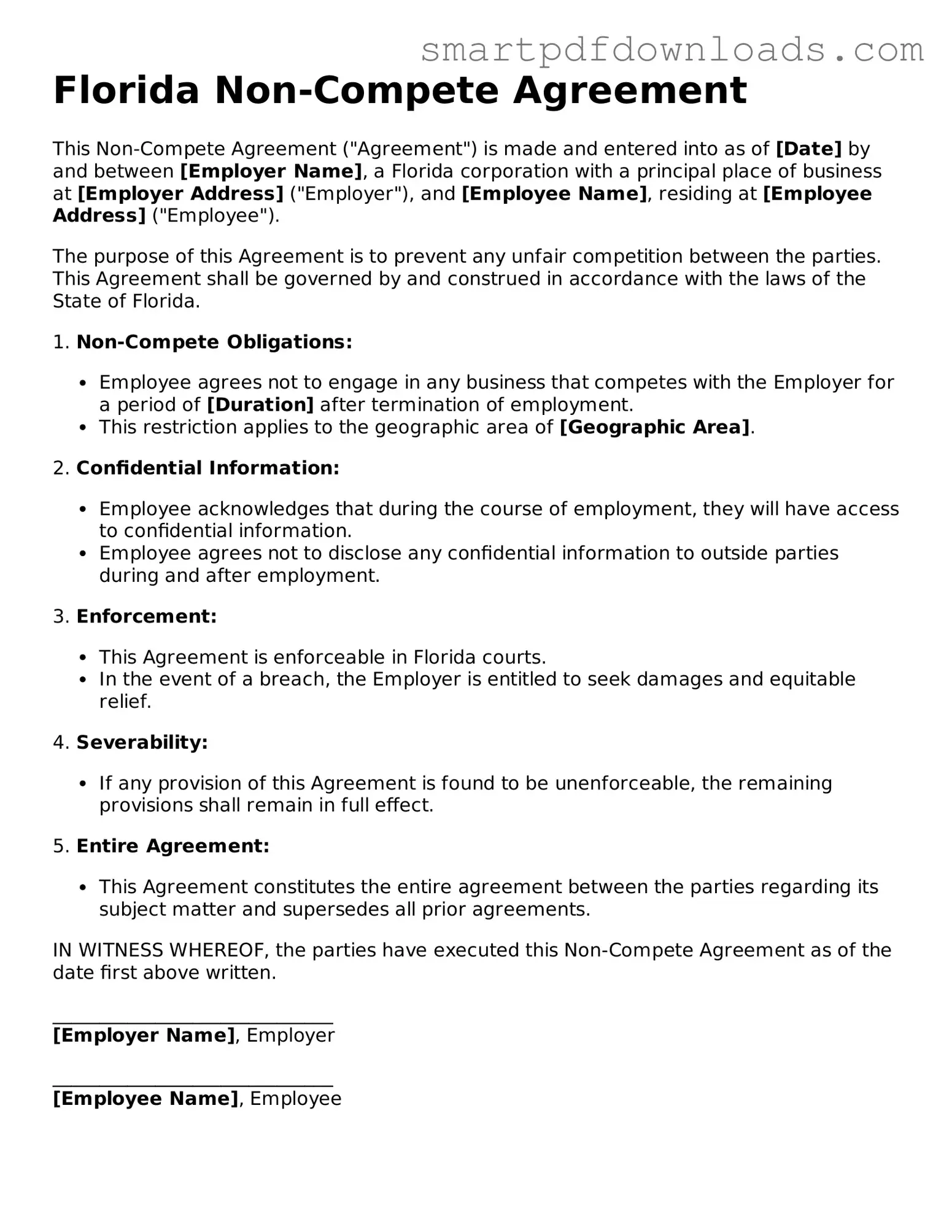Florida Non-Compete Agreement
This Non-Compete Agreement ("Agreement") is made and entered into as of [Date] by and between [Employer Name], a Florida corporation with a principal place of business at [Employer Address] ("Employer"), and [Employee Name], residing at [Employee Address] ("Employee").
The purpose of this Agreement is to prevent any unfair competition between the parties. This Agreement shall be governed by and construed in accordance with the laws of the State of Florida.
1. Non-Compete Obligations:
- Employee agrees not to engage in any business that competes with the Employer for a period of [Duration] after termination of employment.
- This restriction applies to the geographic area of [Geographic Area].
2. Confidential Information:
- Employee acknowledges that during the course of employment, they will have access to confidential information.
- Employee agrees not to disclose any confidential information to outside parties during and after employment.
3. Enforcement:
- This Agreement is enforceable in Florida courts.
- In the event of a breach, the Employer is entitled to seek damages and equitable relief.
4. Severability:
- If any provision of this Agreement is found to be unenforceable, the remaining provisions shall remain in full effect.
5. Entire Agreement:
- This Agreement constitutes the entire agreement between the parties regarding its subject matter and supersedes all prior agreements.
IN WITNESS WHEREOF, the parties have executed this Non-Compete Agreement as of the date first above written.
______________________________
[Employer Name], Employer
______________________________
[Employee Name], Employee
